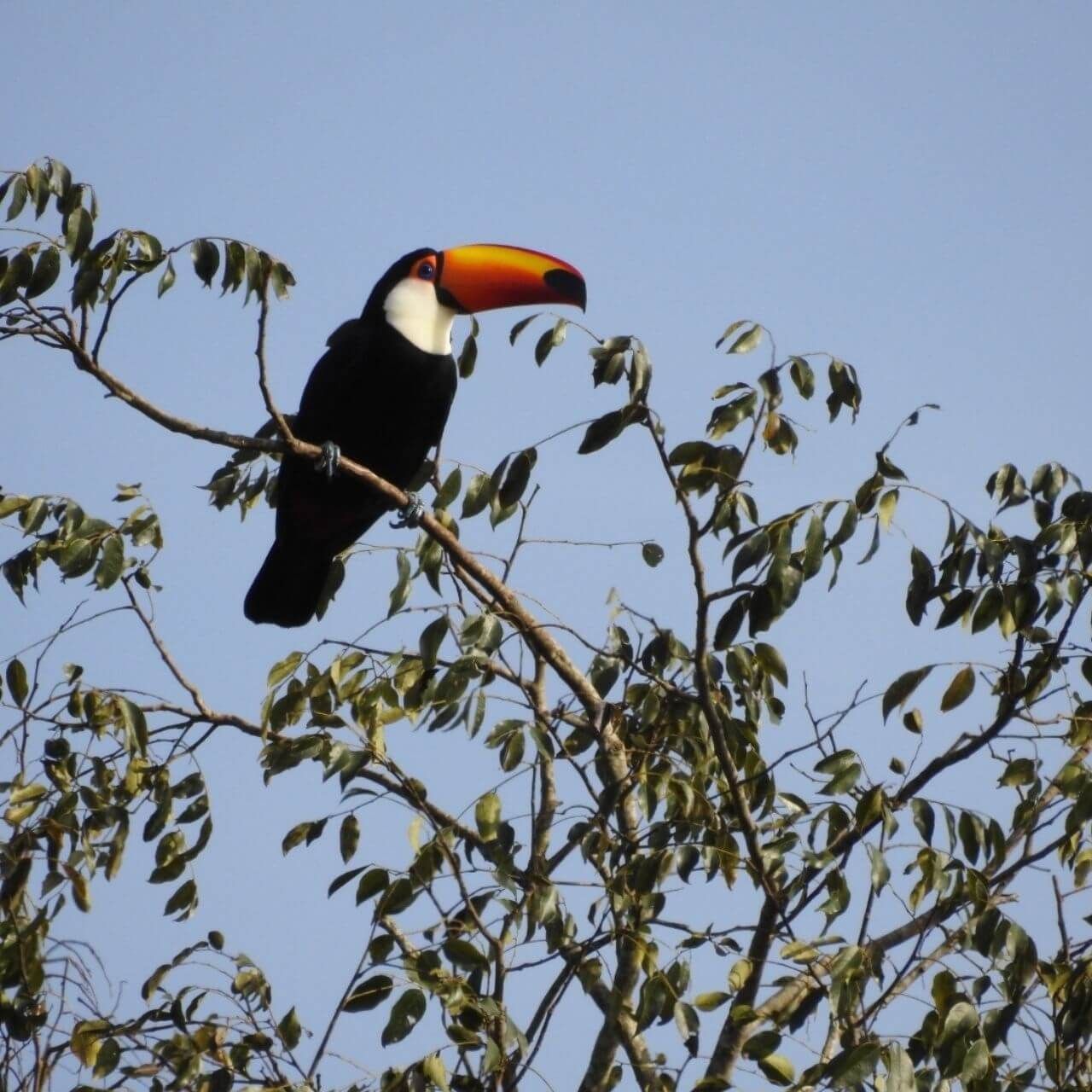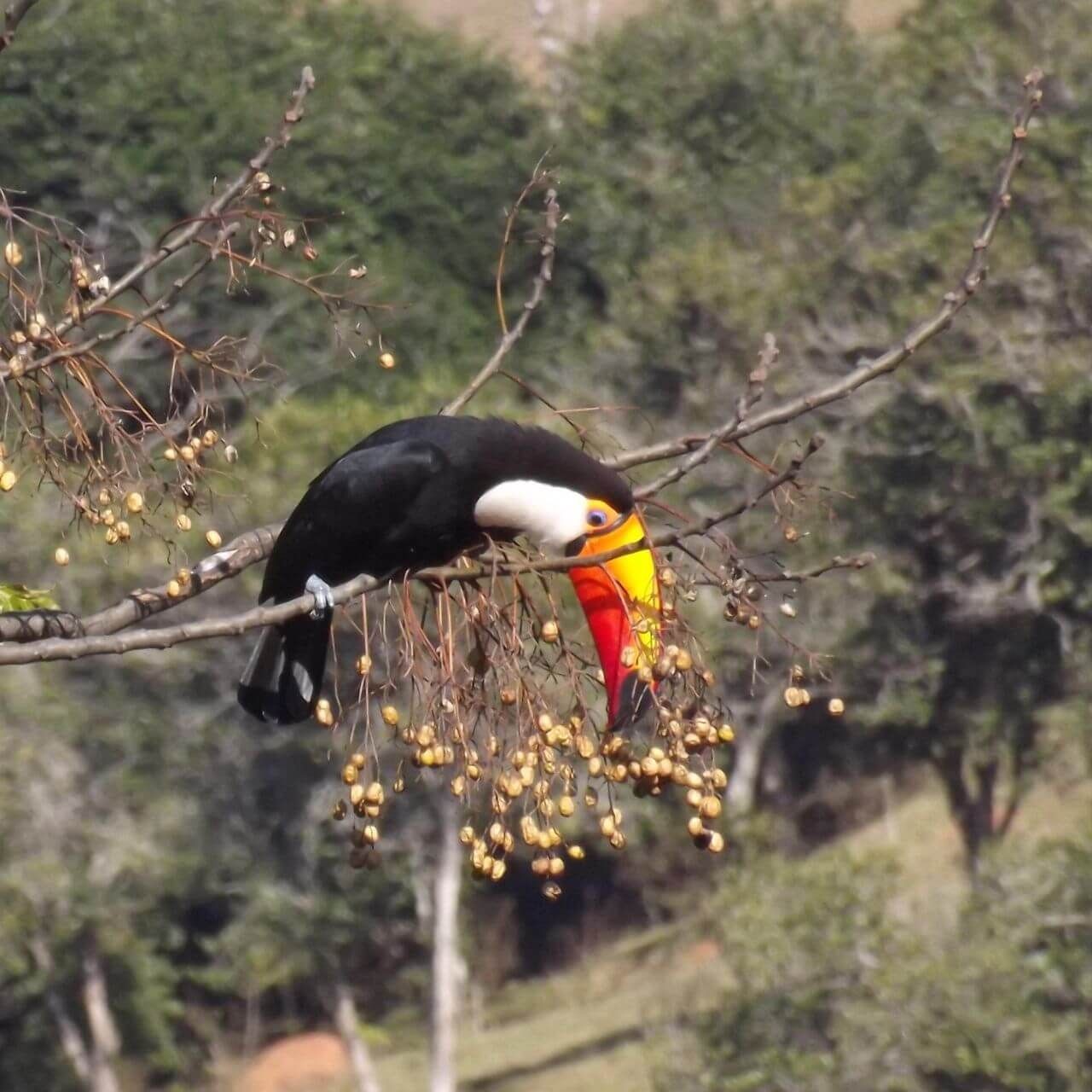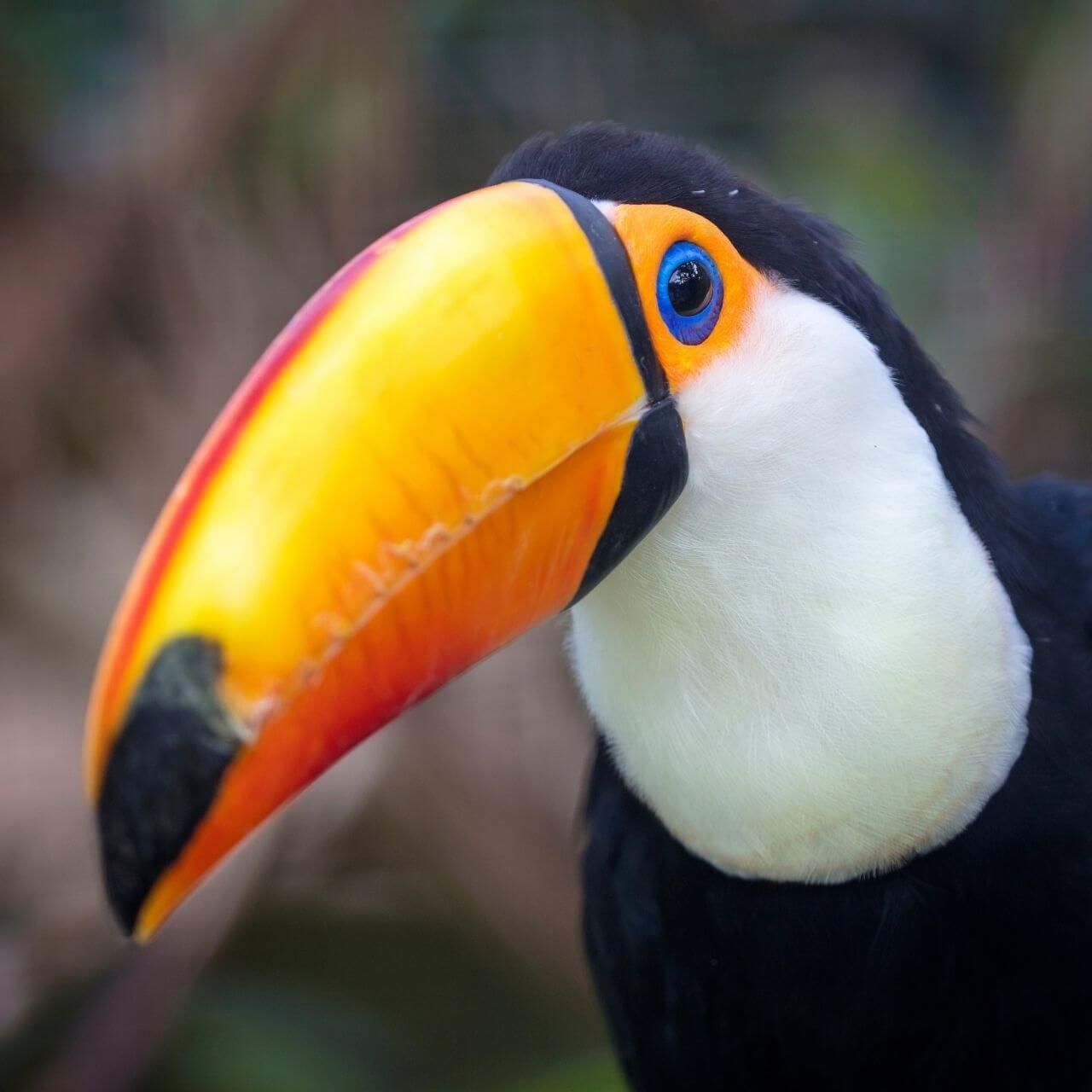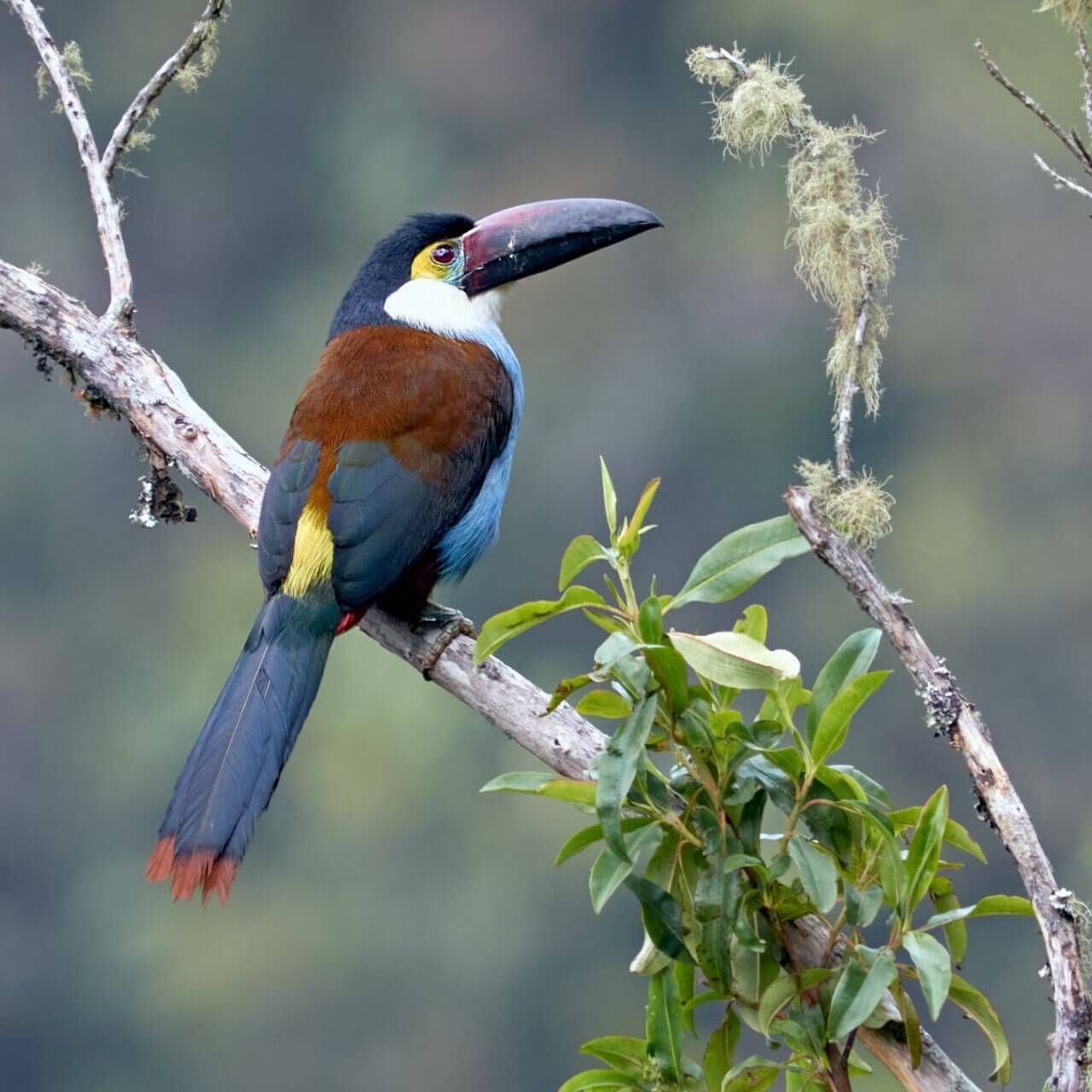Toucans

Let's Learn About Toucans
Word of the Week
Thermoregulation
Thermoregulation is the process of an animal regulating its body temperature.
Cold-blooded animals thermoregulate by moving between warm and cool areas. Warm-blooded animals, like birds, often have special body parts to thermoregulate. A toucan's beak radiates heat which helps keep them cool!
Fast Facts

Where do toucans live?
Toucans live in the tropical regions of the Americas.
Most toucan species live in tropical rainforests ranging from southern Mexico through Central America and South America. They can be found as far south as Argentina! Some species are found in temperate forests in the Andes Mountains.
What do toucans eat?
Toucans are frugivores, meaning most of their diet is fruit!
Toucans use their long beak to pluck fruit from nearby branches. Because of their fruit-heavy diet, toucans are important seed dispersers. Toucans also feed on small animals including insects, small birds, and lizards.


What traits do toucans share?
All toucans belong to the same family, which means they are closely related! Because of this, they have a lot in common.
- They have a long, colorful beak.
- They eat a diet of primarily fruit.
- They have short wings.
- They nest in tree holes.
- They live in warm forests and are threatened by deforestation.
How many toucans are there?
There are more than 40 species of toucans!
It is hard to estimate how many individual toucans exist in the wild. Scientists hypothesize there are more than 10,000 remaining.

Species Spotlight
Keel-Billed Toucans
Ramphastos sulfuratus
Keel-billed toucans, also known as sulfur-breasted toucans or rainbow-billed toucans, are a large toucan species found from southern Mexico to northern South America. They are the national bird of Belize! Like most toucans, keel-billed toucans live in tropical forests and feed mostly on fruit. They also eat bugs, lizards, snakes, and even small birds when possible.
Keel-billed toucans are known for their yellow chest and colorful beaks. Their beak is a mix of green, blue, and orange and usually has a red tip. Their long beak helps them reach fruit without moving their blue feet.
Keel-billed toucans often live in groups. They gather in tree holes to rest and feed. Lost most toucans, they use their long beak to duel with other toucans. Keel-billed toucans have even been seen tossing fruit to potential mates.
Mated pairs nest in these tree holes and work together to raise their chicks until their feathers and beaks are fully developed. Because these holes in large, old trees are so important, keel-billed toucans are heavily threatened by deforestation.
BRAIN BLAST
Are there any disadvantages to having a large, colorful beak? If so, what are they?
Is there anything a toucan could do to fix it?
Conservation Corner
Threats to Toucans
Habitat Loss
Like most rainforest species, toucans are threatened by deforestation. Because they rely on healthy fruit trees for food and tree cavities for shelter and nesting, deforestation poses a major threat to their food source and their breeding ability. Trees in rainforests are cut down and harvested for their wood. Forests are also cleared to create space for farms, towns, and roads.
Illegal Wildlife Trade
If you think toucans are adorable, you're not the only one! Toucans are collected for the rainforest and sold illegally on the black market. They are kept as pets by people who live in their native range and sold on the black market as pets or to animal parks and zoos looking for new animals to display.
Hunting
Toucans are hunted for food, feathers, and 'trophies' like their beak. Some communities feed on toucans as a food source. Others hunt toucans to use their feathers or beaks as decorations in their home.
How YOU Can Help Toucans
You can protect toucans by making smart shopping choices to work against deforestation! Buy wood or paper that is certified by the Forest Stewardship Council (FSC). Products certified by the FSC are made from wood that was harvested sustainably. You can also buy paper that is made from other recycled paper!
We're Talkin' Toucans (And Hornbills!)
Toucans and rhinoceros hornbills are very similar! For each rhinoceros hornbill trait below, determine if toucans have it too, or just hornbills.
Toucan Challenge
Complete the toucan flipbook below!
Toucan Flipbook
Print the pages attached below to create a toucan flipbook.
Page 1: Color the toucan and describe your favorite reason toucans are amazing!
Page 2: Color the map to show where toucans live and write your answer on the line.
Page 3: Fill in the blank and draw a toucan's ecosystem. Write 5 other things we would find in this habitat. Then, identify and draw 3 things toucans eat.
Page 4: Describe 2 threats toucans face and how you can protect them.
Page 5: Share 4 of your favorite toucan facts!
Learn More!
Glossary
Adaptation
The process by which a species becomes more fit for its environment over the course of several generations. It is a result of natural selection.
Beak
The extended jaw of a bird (also known as a bill).
Camouflage
The ability for an organism to blend into its surroundings usually to hide from prey or predators.
Casque
A structure attached to the top of some bird species' bills (hornbills).
Cold-Blooded
An animal that relies on outside sources to regulate its body temperature (reptiles and amphibians). These animals are also known as ectotherms.
Deforestation
The process of removing trees by cutting them down to use their wood or burning them to make room for something else.
Frugivore
An animal that eats mainly fruit.
Omnivore
An animal that eats both plants and animals.
Predator
An animal that hunts other animals for food.
Prey
An animal that is hunted and eaten by another animal.
Rainforest
An ecosystem that receives a large amount of rain and has trees that form a closed canopy.
Seed Dispersal
The process of the seed being carried away from the mother plant.
Species
A closely related group of animals with similar characteristics that are capable of reproducing (example: tigers).
Sustainable
Something that is done in a way that protects the environment.
Thermoregulation
The processes used by animals to control body temperature.
Warm-Blooded
An animal that regulates its body temperature internally (mammals and birds). These animals are also known as endotherms.
Sign Up for our Newsletter
Stay up to date with new adventures, live classes, deals, and more!

Helpful Resources
*Please note we do not offer refunds for EdZOOcating Adventures memberships. We recommend you explore the 3-day free trial prior to subscribing!*





